Designers are betting on outlandish offerings with a dash of grunge. But amid the fuss, functionality and practicality won the race.
HELSINKI, FINLAND — The Finnish design scene offers more than aesthetics—it gives you something substantial, which can’t be said for many of its creative counterparts across the Scandi region. At the latest edition of Fashion in Helsinki—Finland’s platform for emerging talents—designers delivered a cascade of possibilities without losing sight of the wearer: someone whose quiet confidence you might envy.
While other Nordic designers wax poetic about fuss-free minimalism or reclaiming optimism through pared-down expressions, the Finnish seem unbothered. That kind of rhetoric bores them. Their collections speak louder than theory—cutting through the noise with design that’s visceral, grounded, and unapologetically personal.
Like in previous seasons, they took elements of uniforms and broke them down, giving them a different context and new proportions. They lowered the focus of the proportion to the hip and emphasised cuts and volume at the top. The wardrobe’s key edge remained dark and neo-gothic, however the styles on deck came in those structured-looking, floor-length gowns, with a sharply sculpted waistline, or in ultra-short, pleated skirts in white or black cotton, or low-slung roomy trousers with glitzy fastenings.
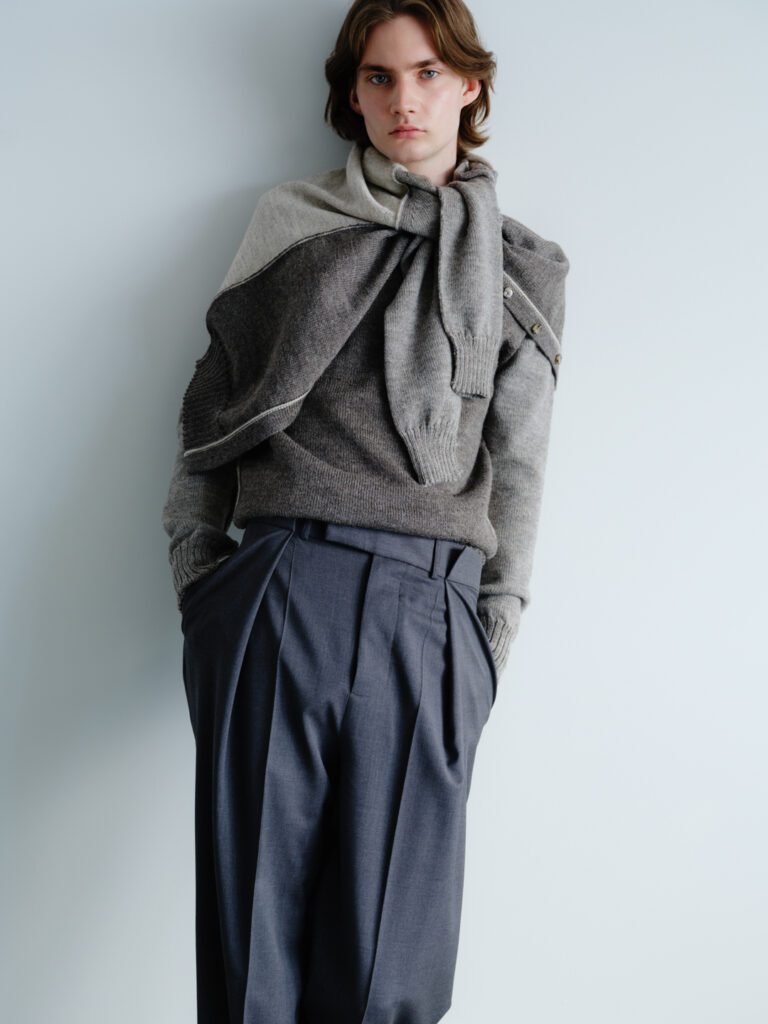
By Hinders
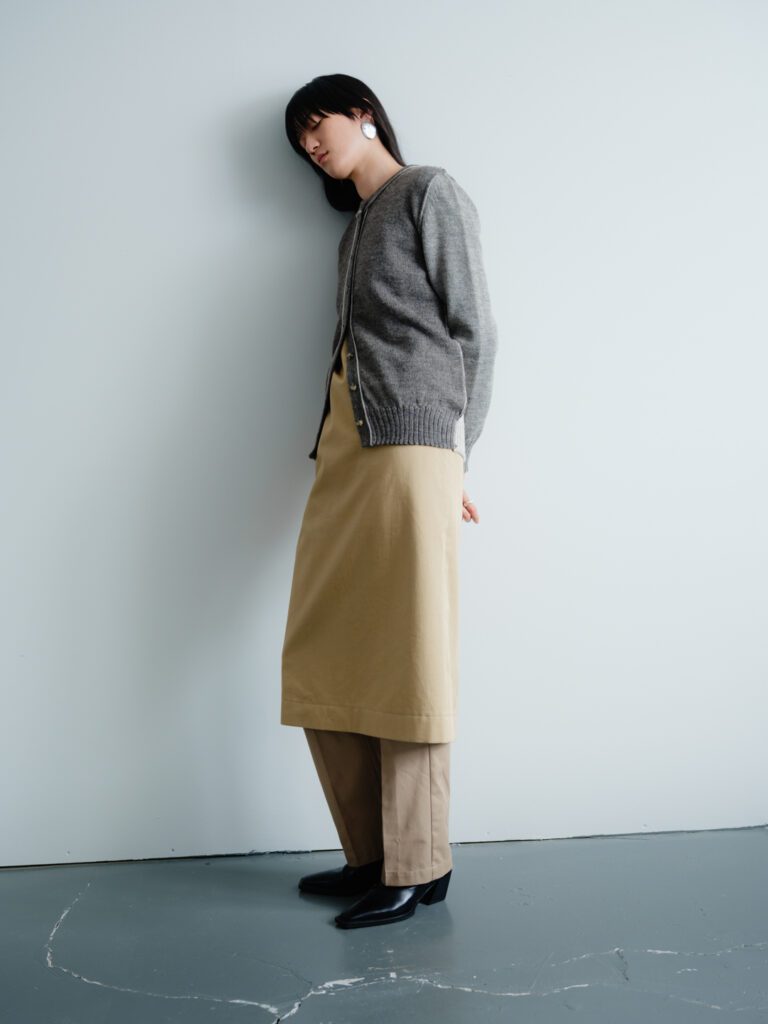
By Hinders
There was a sense of irreverence in how they layered pieces – placing polos over shirts, adding a blazer, or simply showing off a slit alongside a flamboyant walk. Maybe their best look was an experimental take on tailoring — seen across Rolf Ekroth, Jonathan Ingberg’s By Hinders and a few outings from Aalto students — which came in maxi prints juxtaposed with distressed textures.
The shows were a study in itself of gestures, shape, and accessories, including the big tailoring classics, body and gender inclusion that was represented in its fullest and truest glory, and worn-looking flat shoes, which were quirky enough to be funny. In its messy fashion, this season was also a great antidote to the overly recited and groomed quite luxury trend that has long bathed our feeds and inboxes; it was everywhere, in fact.
AALTOFASHION_BACKSTAGE_JOONASSDIRI-51

Backstage at Aalto. Photograph: Joonas S’Diri
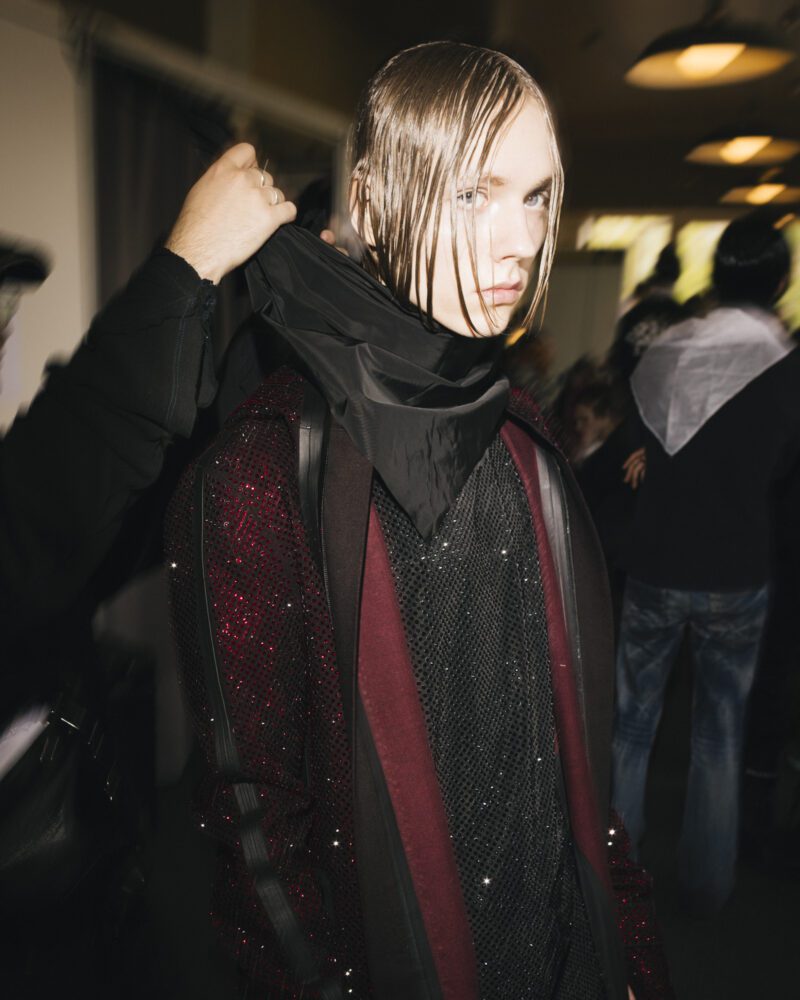
Backstage at Aalto. Photograph: Joonas S’Diri
“I have a long-lasting passion for Finnish design and for its creatives, as I think that sometimes it’s much more challenging coming from those non-fashion capitals,” opined Krzysztof J. Lukasik, newly-appointed Design Director at Chanel who took part in this year’s international jury. “[When residing in this country] I think you need to push yourself as a student even more than when you come from Paris, Milan or London. You don’t have the same access to the industry, nor the same access to an exhibition.”
Lukasik believes one needs to be much more curious, in order to gain a deep taste of the industry particularly when coming from a city in the Nordics. He speaks highly of the students, too. “The Aalto show was professionally prepared, technically quite amazing, and aesthetically very coherent. That’s what we’re looking for when we are part of the fashion jury, and that’s what we found here.”
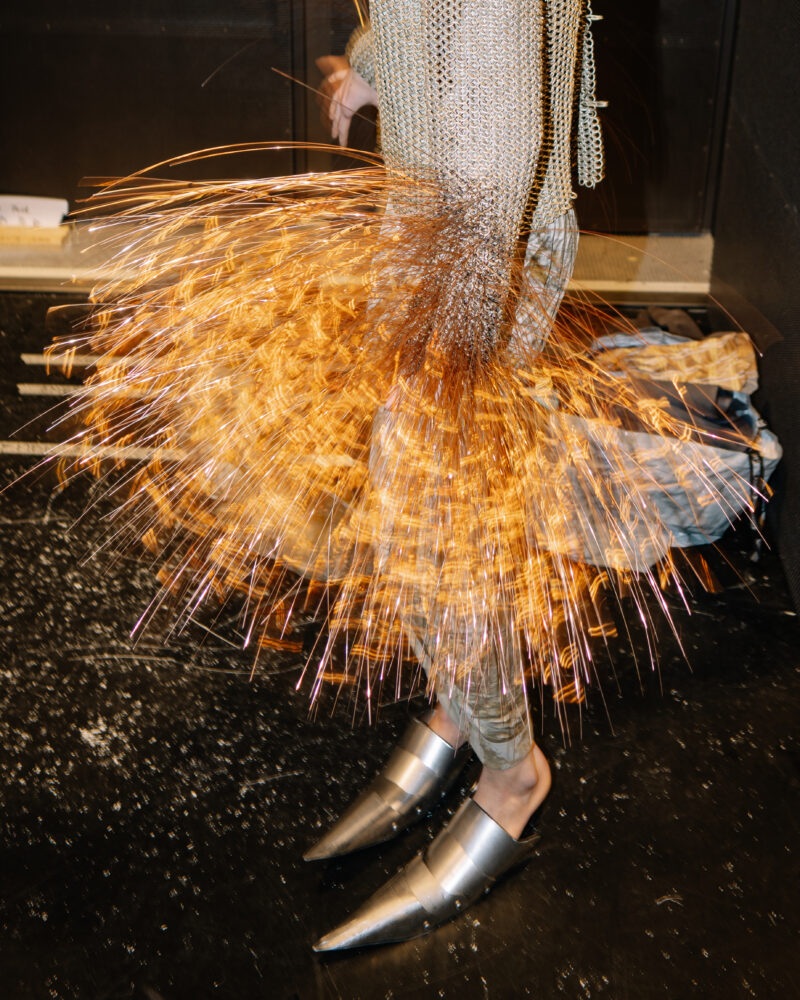
Backstage at Aalto. Photograph: Joonas S’Diri
He deems to be “surprised by this market,” and that he can always be “not ready for what’s happening, and that’s the beauty of the job.” He speaks frankly about the influence and distinct approach of Finnish design. “Globally, we are all getting inspired from the same things; we all follow the same accounts, we all see exactly the same exhibitions, and coming from a place like Finland, one’s looking for inspiration somewhere else. I think that’s the most surprising and that’s the most cherished sentiment of what I saw over the last week.”
That sentiment echoes with designer Rolf Ekroth. “It’s important for us to show here and build our community. Finland isn’t known for fashion, but every year this platform grows.” His latest collection took inspiration from Lavatanssit, a traditional Finnish outdoor dance. “Every summer, people gather around a pavilion, drink, dance, maybe get into a fight or lose a girlfriend or two. It’s chaotic and very Finnish.”
For this collection, Ekroth worked with Japanese nylons and denim for their longevity. “I want these products to last decades and hold resale value.”
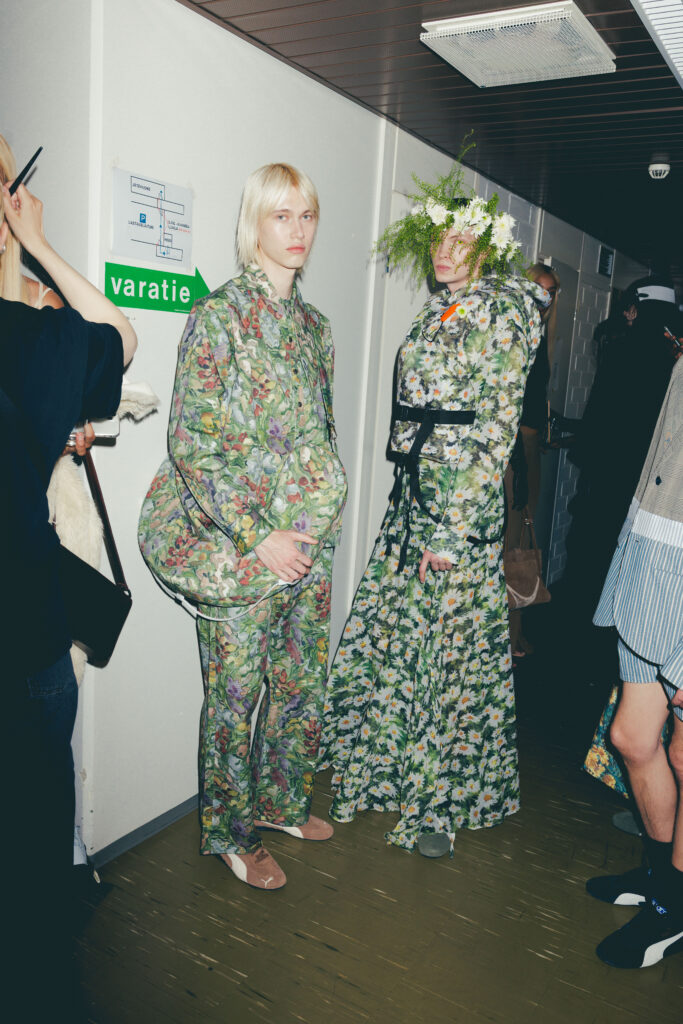
Fashion in Helsinki. Photograph: Kristian Presnal
The abundance of references across the scene didn’t dilute meaning—it deepened it. For Aalto University alumna Sofia Dinello Morais, the Finnish scene acted as a catalyst for creative introspection; a traceable element in the end of year show, too. “The collection is about emotional collaging with discarded garments,” says Dinello Morais, who wanted to reconsider the notions of beauty, time and of what is meaningful, dismantling what waste signifies.
“Everything is done by hand and without sketching or prototyping, just draping on the mannequin, trying to preserve the little details from the garments I was using.” Her concept came from the Global South and thinking about displacement.
“I was thinking a lot about land erosion, contamination of water, and how this overproduction of clothing is very related to all of that,” she added. “I wanted to keep this idea of precariousness and fragility, but trying to make it look beautiful, to give it a new meaning.” A meaning that follows a deep line of thought in Jonathan Ingberg’s creative practice, designer and founder of By Hinders.
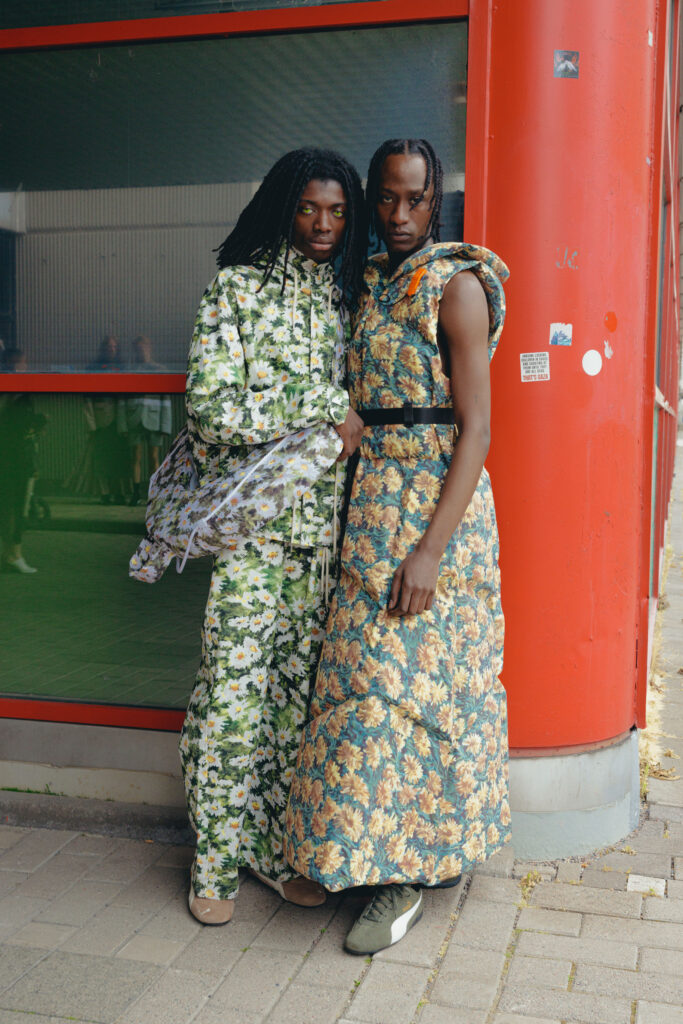
Fashion in Helsinki. Photograph: Kristian Presnal
“I continuously study a multifunctional wardrobe that can work in different areas of life,” argues Ingberg. “As an independent designer, I always think about how to grow, and that’s one of the reasons why this collection is called Growing Pain. The current state of our times is quite a painful process, but to me, I’ve now decided that I’ll be focussing on building a strong foundation and starting to add a lot more commercial pieces that have their own artistic expression.”
To put it frankly: I have no idea what place a gauzy, embellished knit worn with see-through bottoms has in the world. Here, designers flexed their muscles in this vision that marries commercial sensitivity and outlandish productivity. I admire their imagination and rebelliousness in our run-of-the-mill era.
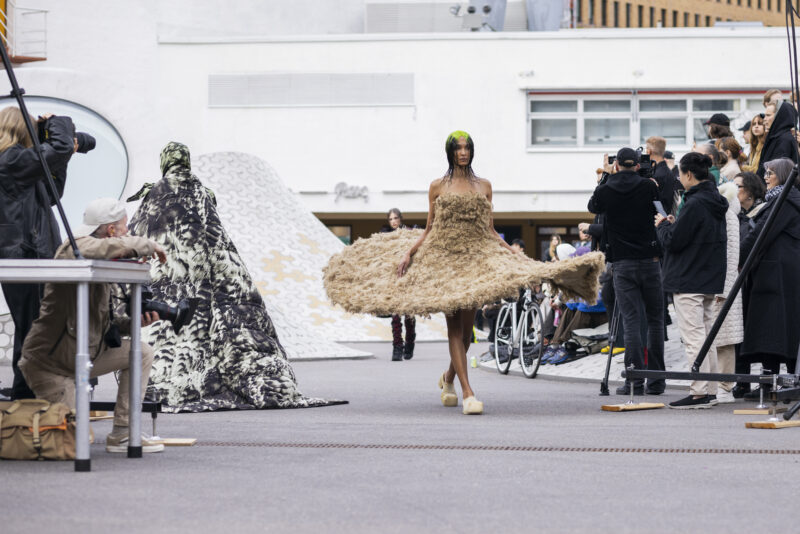
Amos Rex SS25. Photograph: Kerttu Penttilä
Also, brilliantly out there, and flexing its craftsmanship were pieces from the Social Fabric exhibitions and the Amos Rex show, one in cocoon shapes from Duran Lantink, another in slashed denim that were worn over a soft, layered black top. Designers had a little bit of everything, for every taste — especially one, a mundane image of a wearer. That’s what keeps them alight. Because they have all the wacky stuff, the so-called “Finnish codes of design,” and they can offer a freeing fashion character. Which was surely their point.
by Chidozie Obasi
